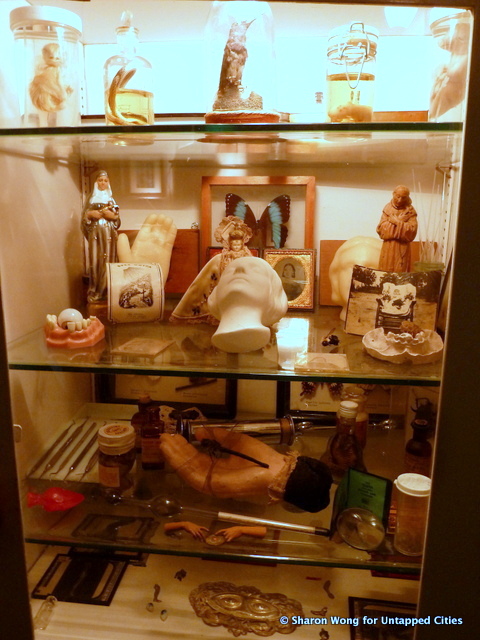
After visiting the Morbid Anatomy Library, part of Brooklyn’s interdisciplinary Proteus Gowanus Gallery, you are likely to feel haunted. I personally woke with my brow damp and my heart hammering, the memory of a black-and-white photograph depicting a dead baby clinging to my waking moments like residue. However, I promise you terror is far from the only emotional response the experience will elicit. After all, the Morbid Anatomy Library’s raison d’être is to showcase the curious intersection between beauty and death. Amidst the collection, there is much to be had of both.
The Morbid Anatomy Library is located in the industrial setting of Gowanus, a mere two or three blocks away from trendy Park Slope. Perhaps portentously, I was almost run over by a truck delivering to one of the many funeral homes in the area. The Tim Burtonesque exterior of the building did not help to inspire much confidence either. I had to steel myself to enter and was surprised to find myself in a comfortable, well-lit gallery space, the first welcoming haven I had encountered in the twenty minutes it took me to get here.
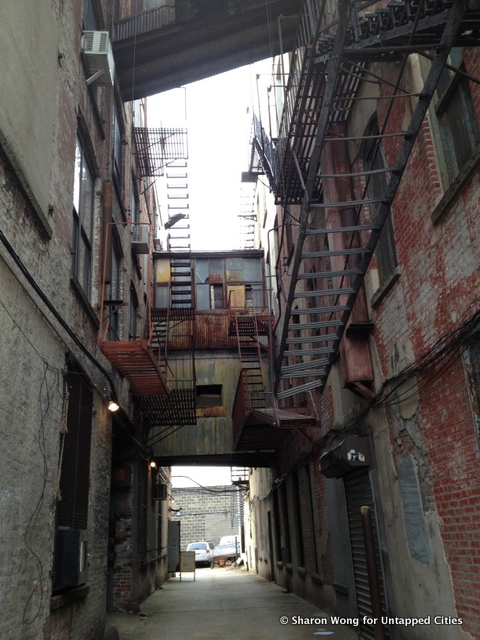
According to founder Joanna Ebenstein, we weren’t always so squeamish about our own mortality. Having founded the Morbid Anatomy library a few years after she founded the Morbid Anatomy blog in 2007, Ebenstein has amassed substantial material evidence that our predecessors were downright fascinated with the deceased. In a cozy space that wouldn’t look out of place in a professor’s home, beautifully arrayed cadavers, porcelain dolls and skull figures turn their glassy or eyeless gazes towards the hapless visitor amidst tomes on topics ranging from pickling processes to fossils.
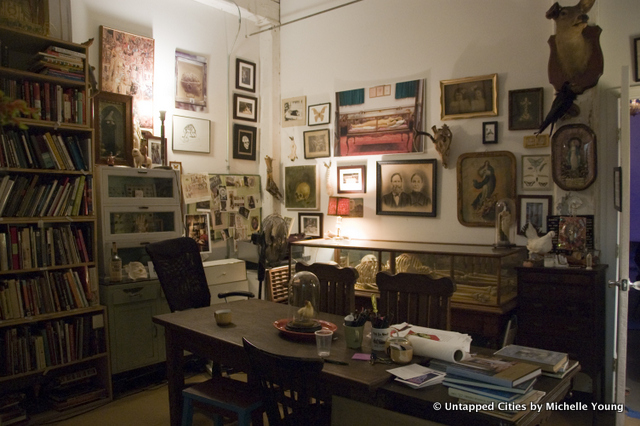
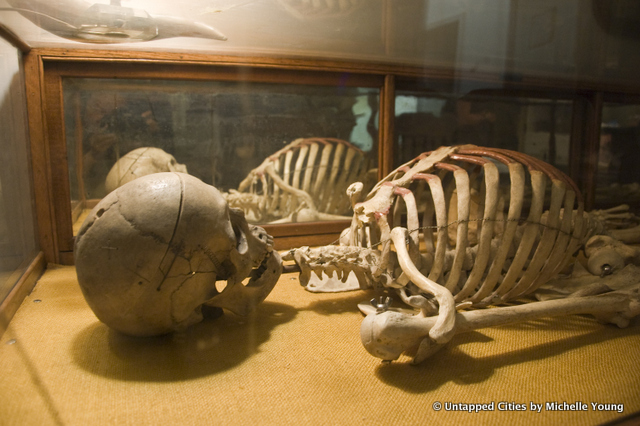
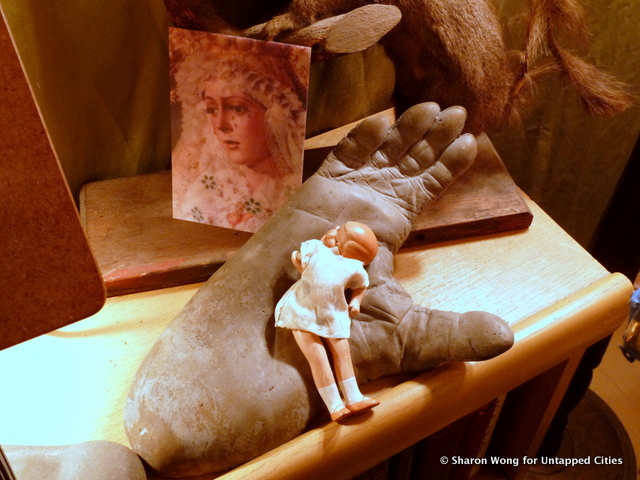
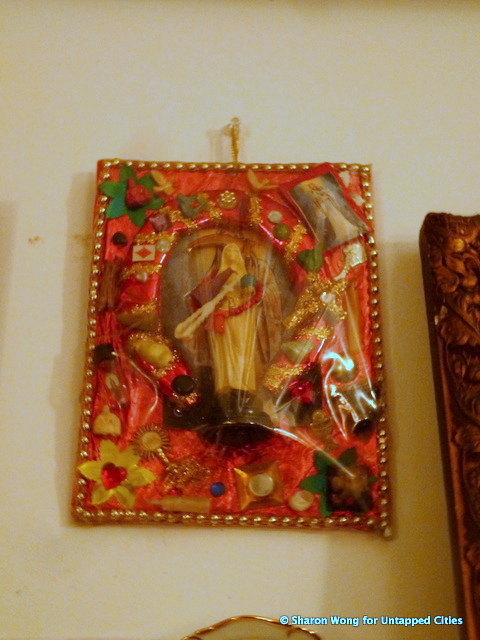
Ebenstein, an articulate and gracious host, was quick to point out large, high-quality photographs of a rather comely waxen effigy of nude a woman reposing.
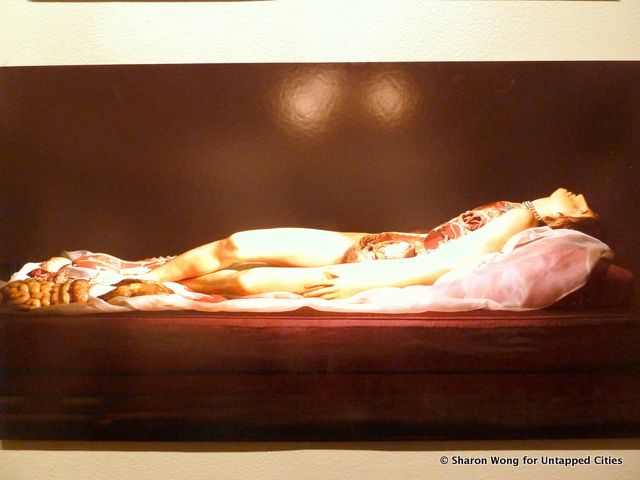
The illusion of sleep was dispelled by the glistening organs spilling from wide gashes in their abdomens. “The highlight here, the Anatomical Venus,” explained Ebenstein, “In the 19th century, these were popular centerpieces in museums and traveling shows. They are made of wax and have real human hair and pubic hair. Beautiful, aren’t they?” I had to admire the decorative sheen and the incredible detail of the organs, some of which were dissected to display their innards. When I asked her if these were wax too, she nodded and gestured towards a round whitish shape, “You might be able to see a fetus in that one”. So I could.
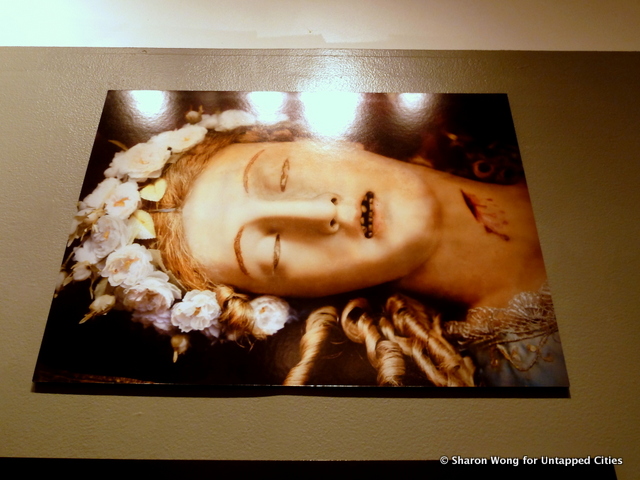
On a visit to the Morbid Anatomy Library, you cannot neglect to peruse the actual dead bodies on display. There were no humans, but there were critters aplenty floating in formaldehyde. These were displayed very artistically amongst other assorted curios in a well-lit glass cabinet. I was particularly drawn to a pickled duckling, whose perfectly preserved body and closed eyes inspired both awe and an odd sense of protectiveness in me.
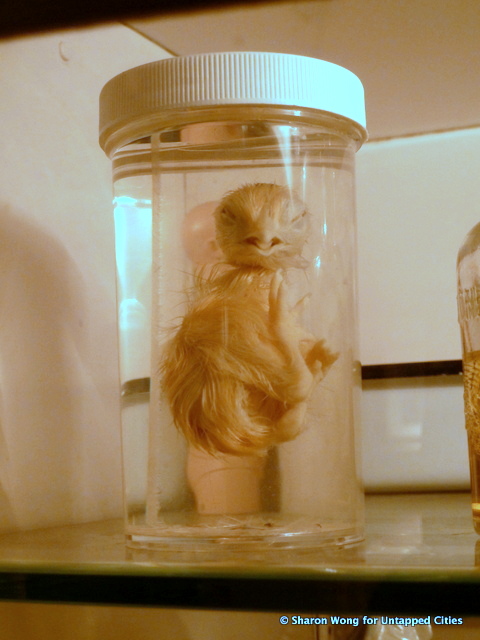
Amidst the glass eyes, pickling jars and mummified jaws, I spotted a small black-and-white photo. It initially seemed innocuous, depicting a Victorian baby ready for a day out in a rocking chair.
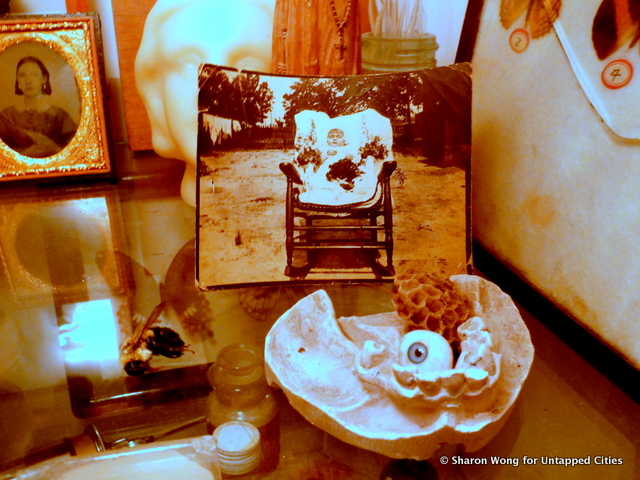
However, something prompted me to take a closer look and I noticed its eyes, two empty buttonholes in its chubby white face. I turned to Ebenstein, “That baby’s…. dead, isn’t it?” She nodded. “Post-mortem photography was quite a booming trade back in the late 19th century. We have another gentleman over here.” I nodded but didn’t look, still transfixed by the infant’s lifeless gaze.
I was silent for a while. It was mind-boggling to consider that I had discovered what possibly amounted to a hundredth of the history contained in a room half the size of my studio. Yet, my mind seemed to be processing a world of information. I thought of a time period when I might have positioned loved ones for their close-ups or taken my children to see the latest Anatomical Venus. Perhaps horrifyingly, it wasn’t too much of a stretch.
Should you wish to, you can also take taxidermy classes here. If you are daring enough to extend your visit until after dark, Atlas Obscura often holds Obscura Society events at the Morbid Anatomy Library.





